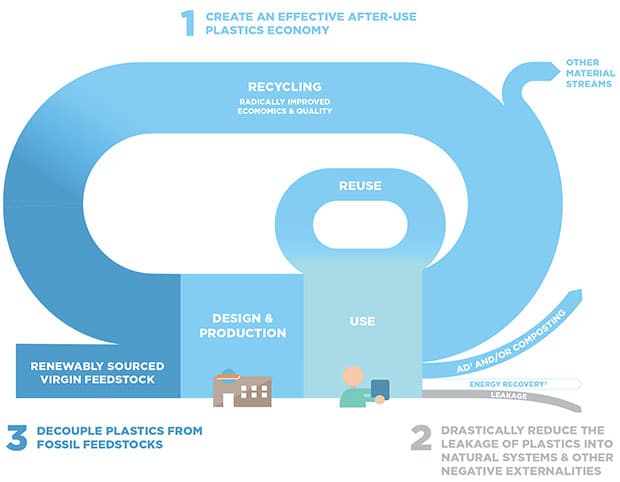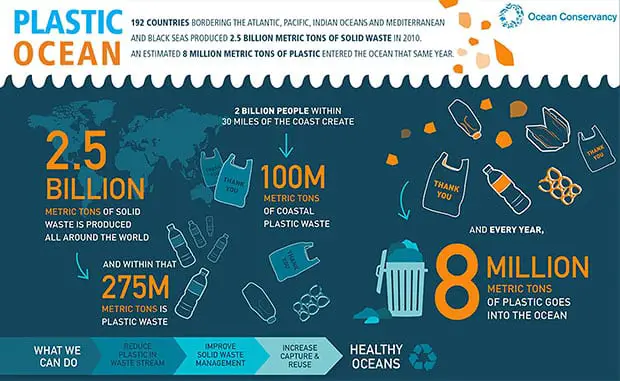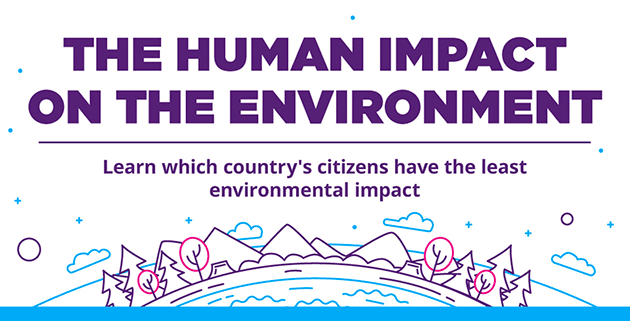Taking Action Against Plastic
To kerb the disastrous environmental impact of plastics, a new report released by the World Economic Forum provides a tangible plan for the global plastics industry to take action across all types of plastic packaging.
In just over half a century, plastics have become pervasive throughout the economy, due to their versatility and cost-efficiency. Yet alongside clear benefits, today’s plastics system has significant drawbacks. This need not be the case, however.
As much as 20% of plastic packaging could be profitably reused and 50% of plastic packaging could be profitably recycled if improvements are made to design and after-use systems. The remaining 30% of plastic packaging (by weight), equivalent to 10 billion garbage bags per year, is currently by design destined for landfill or incineration, and requires fundamental redesign and innovation; otherwise, it will never be recycled.
This is according to a 2017 report published by the World Economic Forum, in collaboration with the Ellen MacArthur Foundation and McKinsey & Company.
The report titled ‘The New Plastics Economy: Catalysing action’ provides a tangible plan for the global plastics industry to take action across all types of plastic packaging, to design better packaging, increase recycling rates, and introduce new models for making better use of packaging.

Continuing with the current business-as-usual scenario, projected growth in plastics production could lead to the oceans containing more plastics than fish (by weight) by 2050, and the entire plastics industry could be consuming 20% of total oil production and 15% of the annual carbon budget.
Looking at the full range of plastic products (not just packaging), concerns have been raised about the potential negative impact of some substances, such as certain phthalates in PVC and bisphenol A in polycarbonate, on society and the economy.
Plastic packaging – the focus of the New Plastics Economy initiative – is plastics’ largest application, representing 26% of the total volume.
Most plastic packaging is used only once and 95% of its value, estimated at $80 billion-$120 billion annually, is lost to the economy after its initial use. Additionally, plastic packaging, which is particularly prone to leakage into the environment, generates negative externalities, degradation of natural systems and greenhouse gas emissions, that have been valued conservatively by UNEP at $40 billion. For these reasons, plastics and plastic packaging have gradually morphed from a fringe to a mainstream issue.
The global momentum for a plastics rethink has triggered a broad group of stakeholders to act. Policy-makers are introducing landmark legislation worldwide, affecting plastics and plastic packaging, with examples from 2016 including:
- further national regulations on single-use plastic bags in Indonesia, Colombia, and Morocco;
- a ban on non-biodegradable plastic cutlery, cups and plates in France;
- a ban on EPS packaging in San Francisco.
In November 2016, citizens of California approved Proposition 67, which prohibits grocery and other stores from providing customers with single-use plastic takeaway bags. This is in addition to more 130 regulations, at a city level and countywide, across 20 states, governing plastic packaging in the United States alone.
Importantly, the EU Commission aims to publish a strategy on plastics as part of its Circular Economy Action Plan by the end of 2017. The NGO community is also intensifying its efforts, as shown by the #breakfreefromplastic movement. Launched in September 2016, the movement, which aims for a future free from plastic pollution, grew to over 500 member organisations in just a couple of weeks.
Academic experts are increasingly studying plastics and their impact on the economy and society. Aside from plastics leakage into the ocean, the impact of substances of concern in plastics (not just packaging) is one active area of research. Besides polymers, plastics contain a broad range of other substances, with some of them raising concerns about complex long-term exposure and compound effects on human health.
Download the full report: www3.weforum.org/docs/WEF_NEWPLASTICSECONOMY_2017.pdf
Header image credit: Ferdi Rizkiyanto. The global campaign to stop plastic pollution presented at the Rio Earth Summit. Title: ‘Just because you can’t see it, doesn’t mean it isn’t there.’
Ocean Conservancy infographic:






